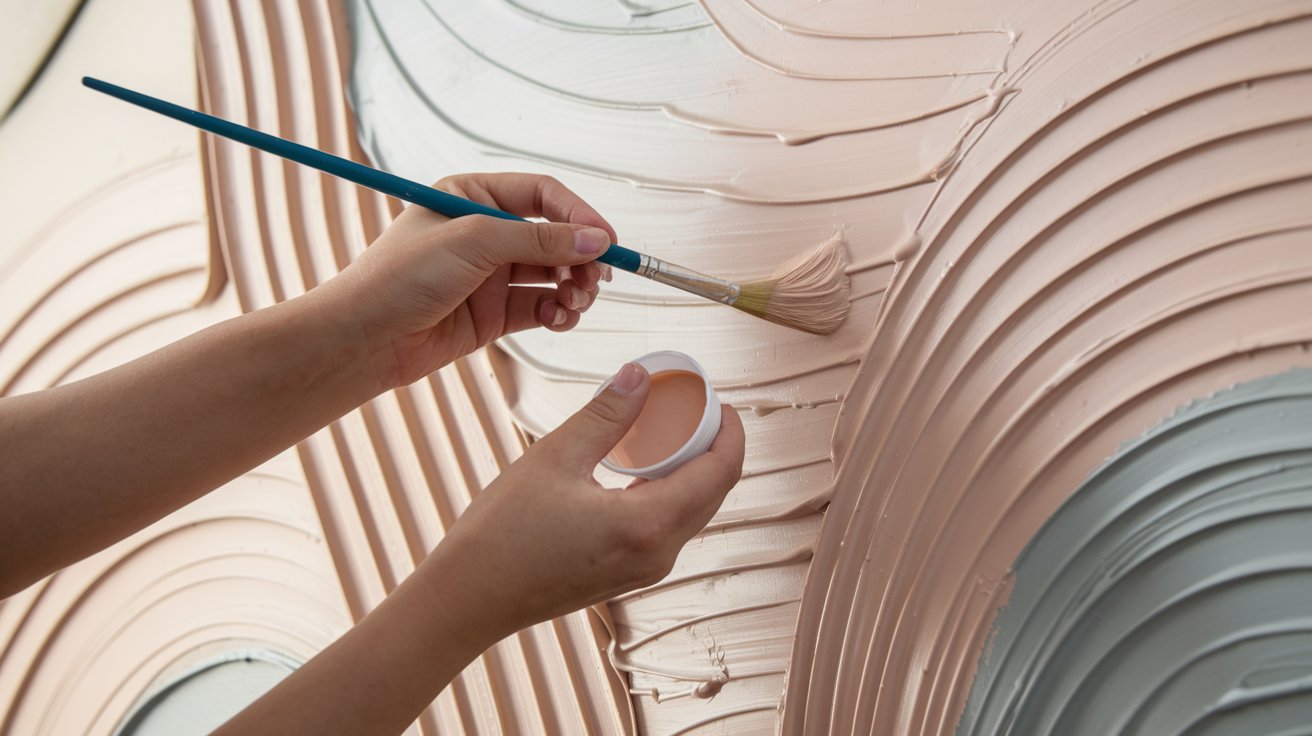Table of Contents
Textured wall art has become an exciting trend in home decor, providing depth, character, and a unique visual appeal to any room. Best of all, creating your own textured wall art is a fun and rewarding DIY project that can bring a personal touch to your space. Whether you’re a seasoned DIY enthusiast or a beginner looking for a creative outlet, this guide will take you through everything you need to know about making textured wall art from scratch.
In this step-by-step guide, we’ll cover essential materials, techniques, and creative tips to help you design a stunning piece of textured wall art that’s uniquely yours.

Why Create Textured Wall Art?
Textured wall art isn’t just about adding beauty to your home. The appeal lies in the tactile, three-dimensional qualities that engage both the eye and the sense of touch. Adding texture to art can give a room warmth, making it feel cozier and more dynamic. Whether you’re using plaster, paint, or mixed media, the result will always be a one-of-a-kind masterpiece that brings character to your walls.
Materials You’ll Need for Textured Wall Art
Before diving into your project, gathering the right materials is key to making sure the process goes smoothly. Here’s a list of what you’ll need:
- Canvas or Wooden Panel: A sturdy base for your art.
- Texture Medium: This can be plaster, spackle, or modeling paste.
- Acrylic Paint: Choose colors that will suit your style and the room you plan to display the artwork in.
- Palette Knife or Spatula: For applying the texture medium.
- Brushes: Various sizes for adding paint and details.
- Stencils or Tools for Texture: These can include anything from household items like sponges or combs to professional art tools.
- Sealant: To protect your finished work.
Optional materials include gold leaf, glitter, sand, or even small embellishments to add more visual interest to your piece.
Step-by-Step Instructions for Creating Textured Wall Art
Step 1: Choose Your Canvas Textured Wall Art
Start by selecting a canvas or wooden panel that suits your needs. Canvases come in various sizes, and wooden panels offer a sturdier option if you’re planning to work with heavy textures. If you’re new to textured wall art, begin with a smaller canvas to get the hang of the techniques before committing to a larger piece.
Step 2: Prepare Your Base
Before applying any texture medium, prime your canvas or panel with a base coat of acrylic paint. This base layer helps to ensure that the texture adheres well and that the final colors remain vibrant. White or neutral tones are usually a good starting point, but feel free to experiment based on your design plan.
Step 3: Apply the Texture Medium
Now comes the fun part: adding texture. Using a palette knife or spatula, apply your chosen medium—whether it’s plaster, spackle, or modeling paste—directly onto the canvas. There’s no right or wrong way to do this; the goal is to create peaks, ridges, or waves that will give the artwork its three-dimensional quality. Don’t worry about perfection here—abstract, organic shapes often lead to the most captivating results.
Step 4: Experiment with Texture Tools
While the texture medium is still wet, start experimenting with various tools to create interesting designs. For example:
- Use a comb to create straight lines or wavy patterns.
- Press a sponge against the surface for a more porous, natural effect.
- Create swirls or circular designs with a palette knife.
Feel free to layer multiple textures to make the piece more dynamic.
Step 5: Let the Texture Dry Textured Wall Art
Once you’ve applied and manipulated the texture to your satisfaction, allow it to dry completely. Depending on the thickness of the texture medium and the room’s humidity, this can take anywhere from a few hours to overnight.
Step 6: Add Color Textured Wall Art
After the texture has dried, it’s time to paint. Acrylic paint works well for this because it adheres beautifully to textured surfaces. Apply your base color first, and then start layering additional colors for depth. You can dry-brush for a more subtle effect or use thicker strokes for bold contrast.
If you want a metallic or shimmering effect, consider adding touches of gold or silver leaf, especially to raised areas where light will naturally hit. This adds a sophisticated finish to your textured art.
Step 7: Seal Your Artwork
After the paint has dried, apply a sealant to protect your masterpiece from dust, moisture, and fading. You can use a glossy, matte, or satin finish, depending on your preference. Make sure to follow the instructions on the sealant for proper application.
Creative Ideas for Textured Wall Art
Now that you know the basics, it’s time to get creative! Here are some ideas to inspire your next textured wall art project:
1. Minimalist Textures
Keep it simple with monochromatic textures that emphasize the natural shapes of your medium. Neutral tones like white, beige, or gray can create a calming, sophisticated look.
2. Nature-Inspired Textures
Take inspiration from natural elements like waves, mountains, or tree bark. Use earthy tones like greens, browns, and blues to mimic the outdoors, or add sand or small stones for a more tactile, natural feel.
3. Abstract Textured Wall Art
Embrace abstraction with bold colors, shapes, and lines. The beauty of abstract art lies in its freedom—there’s no right or wrong approach. Mix different textures and media to create a unique, eye-catching piece.
4. Mixed Media Textures
For a truly unique piece, combine textures with other materials such as fabric, beads, or paper. Mixed media art allows you to experiment with different elements, adding dimension and interest to your work.
Tips for Beginners
If you’re just getting started with textured wall art, here are a few tips to help ensure success:
- Start Small: Practice on smaller canvases before committing to a larger piece.
- Don’t Rush: Allow enough drying time between steps. Rushing can result in smeared textures or muddy colors.
- Experiment Freely: There are no strict rules in textured art, so have fun and experiment with various materials and techniques.
- Look for Inspiration: Browse online galleries or visit art exhibits to find inspiration for your own designs.
Where to Display Your Textured Wall Art
Once you’ve completed your textured wall art, finding the perfect spot to display it is essential. Consider areas like your living room, hallway, or bedroom—spaces where the artwork can shine and be appreciated.
Living Room
A large, textured art piece can be a stunning focal point above the couch or fireplace.
Bedroom
Create a calm and serene atmosphere by using soft textures and neutral colors that complement your bedroom decor.
Hallways and Entryways
These often-overlooked spaces can benefit from a smaller, striking piece of textured art to greet guests or add interest to narrow areas.
Conclusion
Creating textured wall art is a fun, creative DIY project that anyone can do. With a little practice and the right materials, you can produce beautiful, one-of-a-kind pieces that enhance the aesthetic of any room. Whether you prefer minimalism, abstraction, or nature-inspired designs, the options are endless. So grab your materials, unleash your creativity, and start making your own textured wall art today!
